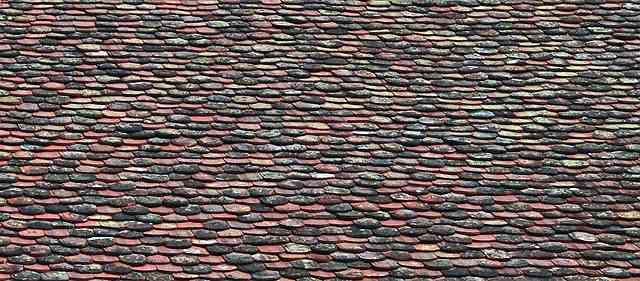A lot of people know that regular roof maintenance is a good idea, but they are not all sure why. It turns out that there are actually several great reasons for having your shingle roof inspected regularly. Two of the major benefits of owner-performed Shingle Roof Maintenance include:
Reduced Risk of Damage to Your Home
All roofs collect debris and moisture over time. If you do not deal with it in a timely manner (a few times per year or every six months), then you can start to see some problems develop, including leaks. Proper shingle maintenance will ensure that any problem like tree damage to your roof that develops won’t get too big before you have them fixed, thus reducing the risk of damage to your home.
Better Insurance Rates
If you have had your roof inspected and maintained regularly, then your insurance company may offer you a discount on the rate you pay for coverage. The reason that this type of maintenance can result in lower rates is that it shows that you are willing to take preventative steps to reduce damages or incidents at your home.
If you want to get the best value out of shingle roof maintenance, then consider investing in a high-quality tool. You will be amazed at how much easier it is to remove spent tiles when you have a good pair of roofing ladders with safety rails attached. Worried about choosing the right model? Don’t be!
Housekeeping: The Good Reasons to Keep Your Roof in Tip-Top Shape!
If you are like most people, the last thing that you want to do is deal with the maintenance of your home. After all, it takes time and effort – two things that we should be spending on more enjoyable activities (you know…like playing with your dog!).
However, if you learn why roof maintenance is necessary, then this will help you make a decision about whether or not an inspection is worth the time and money.
Just as important as learning ‘why’ shingle roof maintenance is important is learning about when such work needs to be done. In other words, how often does professional inspection have to occur? As it turns out, there are three major times each year when you should schedule a professional Shingle Roof Maintenance visit:
Spring – This is the time of year when fallen leaves and other debris start to collect on your roof. If you have any issues with leaks during the spring rains, then you will certainly want to make sure that there isn’t anything stacked up above your shingles! Otherwise, they won’t be able to properly protect you from high water damage.
Summer – Due to heat and humidity, your roof is going to generate more moisture than it does during the winter months. Having someone do an inspection in the summer can help you identify potential problems before they result in major leaks, which can cost a lot of money to repair.
Fall – Fall is just around the corner, and if you leave any debris on your roof for too long, then you are likely to have some major issues by the time winter rolls around. Take care of your home’s shingles before they get covered in snow and ice – else you risk them suffering some significant damage!
At this point, it is a good idea to take stock of how much money these inspections cost – but don’t worry, they aren’t nearly as expensive as you may think! The reason that shingle maintenance costs vary is that there are several different options out there:
Roof Inspection: When Should I Have this Done?
If you want to get the most out of shingle maintenance, then it is a good idea to schedule an inspection at least once per year. Some companies recommend doing so twice per year, while others may say not to bother unless there is a leak or other problem.
Ultimately, the decision of when to have your roof inspected comes down to how much time and money you are willing and able to commit.
The big thing that makes professionals worth their salt (and the reason why they charge more) is that they can identify potential problems in areas that you might never think about.
Record-keeping: The Advantage of Being Thorough!
When it comes to shingle maintenance, you have two major goals: reducing the likelihood that leaks will occur and reducing the cost to repair them. To do this, it is important for homeowners to audit their homes at least once per year.
However, not all people think that such record-keeping is really worth their time – after all, why would a homeowner want to keep track of roofing materials if they aren’t having any issues? Well, there are several reasons why you should keep records of your home’s structure:
Spotting Problems Early: Why Not Act Before the Damage Occurs?
In addition to these benefits, many homeowners argue that they keep records simply because it makes them more aware of what is going on with their homes. Roofing materials are important, so why not take steps to ensure against issues before they turn into major problems – especially since there may be some predictability regarding when things will go wrong.
For example, let’s assume that your roof was installed in 1995 and you live in an area where rainfall averages out to 5 inches per month throughout each year.
Once you have located the perfect set of ladders, it is time to put them to work. Follow our step-by-step guide below to ensure that your roof’s maintenance process goes off without a hitch:
Step 1 – Gather Your Tools – Like any job, shingle maintenance begins before you even begin working on the roof. You need to make sure that you have all of your tools assembled and ready before you head up onto the roof.
These items should include things like screwdrivers, crowbars, and hand saws. Have at least one person help you; having an extra set of hands can be crucial in keeping yourself safe as you perform these tasks.
Step 2 – Protect Your Home – You must take safety precautions when working on your roof. Make sure that fences or other barriers are set up so that children and pets cannot climb over them and get near the edge of the roof while you work. No one wants a cat to be hurt, but it is even worse if an innocent child or pet gets injured by falling off your house!
Step 3 – Remove Old Roofing Materials – Before you can install new shingles, you must remove any damaged ones first. To do this, start at one far corner of the roof (near an eave). Use a crowbar to pry up one tile close to where you began.
Try not to break the tiles (yet), as these can be sold to recycling centers and the proceeds can offset some of your costs. Pick up the broken tile (without stepping on it!) and remove it from the roof or throw it into a trash bag.
Step 4 – Remove Remaining Materials – Remove tiles in small groups, rather than going over the whole roof in one big sweep. Once you have removed everything, get ready to install new shingles!
Step 5 – Install New Roofing Materials – If you are installing a new roof yourself, then follow the shingle’s instructions to install. Remember that you may need help – get a friend or family member to assist if necessary.
Step 6 – Inspect Your Work – Once your roof is installed, inspect it for any potential issues. Are there more damaged tiles? Look closely in corners and other vulnerable areas as these will be likely places for damage to occur. Do not forget to check everything! You want your home protected from leaks caused by water damage, so don’t rush through this step!
Once you have completed this process, you are ready to move on with life and enjoy your newly-shingled roof! By performing regular maintenance, you can keep your roof in great shape for years to come.







